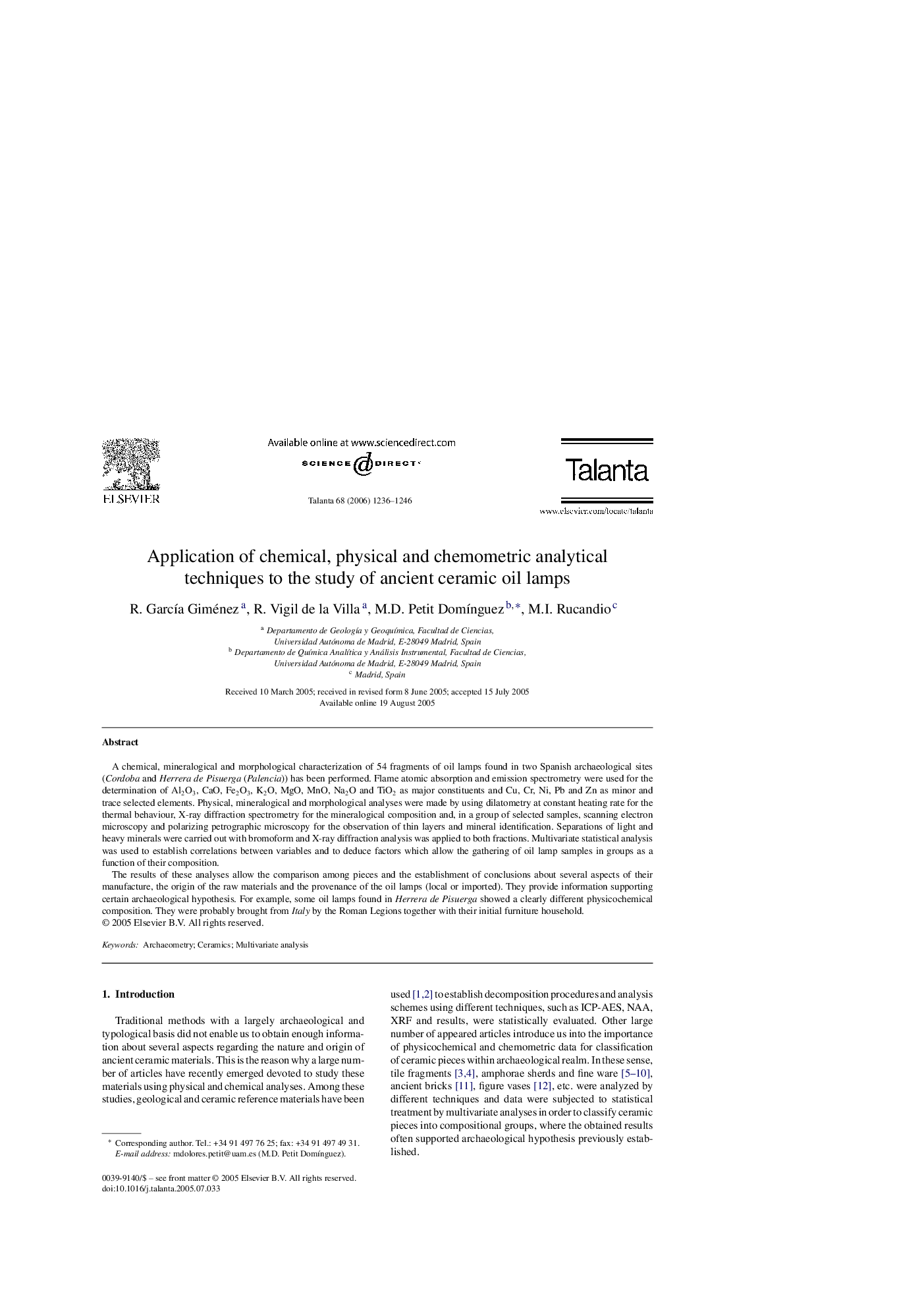| Article ID | Journal | Published Year | Pages | File Type |
|---|---|---|---|---|
| 1246411 | Talanta | 2006 | 11 Pages |
A chemical, mineralogical and morphological characterization of 54 fragments of oil lamps found in two Spanish archaeological sites (Cordoba and Herrera de Pisuerga (Palencia)) has been performed. Flame atomic absorption and emission spectrometry were used for the determination of Al2O3, CaO, Fe2O3, K2O, MgO, MnO, Na2O and TiO2 as major constituents and Cu, Cr, Ni, Pb and Zn as minor and trace selected elements. Physical, mineralogical and morphological analyses were made by using dilatometry at constant heating rate for the thermal behaviour, X-ray diffraction spectrometry for the mineralogical composition and, in a group of selected samples, scanning electron microscopy and polarizing petrographic microscopy for the observation of thin layers and mineral identification. Separations of light and heavy minerals were carried out with bromoform and X-ray diffraction analysis was applied to both fractions. Multivariate statistical analysis was used to establish correlations between variables and to deduce factors which allow the gathering of oil lamp samples in groups as a function of their composition.The results of these analyses allow the comparison among pieces and the establishment of conclusions about several aspects of their manufacture, the origin of the raw materials and the provenance of the oil lamps (local or imported). They provide information supporting certain archaeological hypothesis. For example, some oil lamps found in Herrera de Pisuerga showed a clearly different physicochemical composition. They were probably brought from Italy by the Roman Legions together with their initial furniture household.
